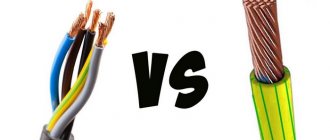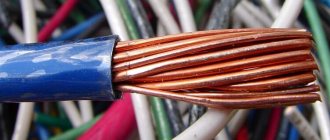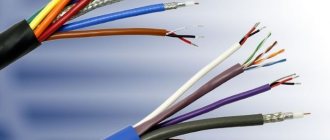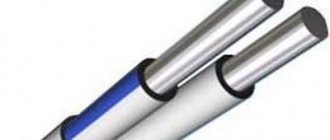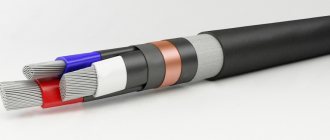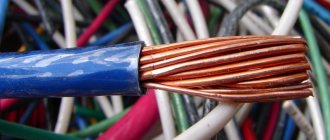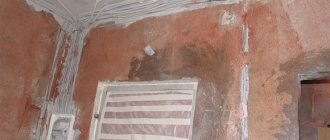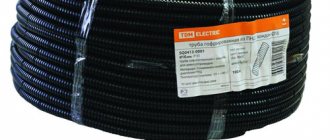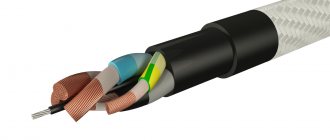Specifications
A heat-resistant cable is an electrical conductor enclosed in a sheath of heat-resistant material. This insulation is specially made for the operation of wires and cables in rooms with high temperatures. The insulation is halogen-free, resulting in low smoke emissions. The sheath of these cables and wires is environmentally friendly.
Technical indicator of the product
The RKGM wire has the following characteristics:
- Rated alternating voltage - up to 660 V.
- The cross-section of the stranded core is from 0.75 to 120 square millimeters.
- Flexibility class - from 4 and more.
- The smallest bending radius during installation work is double.
- The operating temperature range is from minus 60 to plus 180 degrees Celsius. The gasket temperature should not be less than 15 degrees below zero.
- The warranty period is 8 years.
- Resistant to fire.
Kinds
What types are there?
Before moving on to discussing types of products, it is necessary to study their main advantages:
- Possibility of operation at high temperature loads.
- High mechanical strength.
- Fire resistance.
- High resistance to corrosion.
- Ability to work in aggressive environments.
- Maximum safety during operation.
Note! Heat-resistant cables and wires for electric furnaces are exposed to high temperatures. They can also be used in grills, heaters, infrared dryers and other equipment.
Manufacturers produce several types of products.
Decoding of the RKGM conductor
Wire RKGM
As a rule, RKGM (marking) is deciphered as follows:
- The letter “A” is missing at the beginning, which means copper wires;
- P – rubber insulation, and its type is organosilicon, as evidenced by the next letter “K”;
- G – the cable is flexible;
- M – outer fiberglass braid. For additional protection, the manufacturer uses heat-resistant silicone varnish and enamel.
Heat resistant conductor MVV
Heat-resistant wire MVV
Scope of application of this type of product:
- heating elements (clamp, cartridge, etc.)
- any electrothermal equipment (furnaces, drying ovens, etc.)
Has the following technical characteristics:
- Long-term operating temperature: from −60 to +500 degrees. Briefly up to +700 degrees.
- The maximum operating temperature of conductors made of 99.20% nickel is +600 degrees.
- Rated supply voltage: 300/500 V.
- Test supply voltage: 2500 V.
- Non-flammable up to +500 degrees.
- Does not ignite if placed in an open fire.
How to decipher the PRKA conductor
PRKA
This abbreviation can be deciphered as follows:
- P – wire made of copper material,
- RK - for reliability and protection of insulation, it is impregnated with anti-rot lubricant,
- A – this letter characterizes high hardness.
This type of wire is used when connecting electric heating devices and electric motors.
The insulator does not contain halogens. It is resistant to fungus and mold. This type of wire is so effective that it is difficult to destroy even when exposed to extreme ultraviolet rays. PRKA does not emit gases. This insulation helps maintain performance when temperatures reach 180 degrees. In addition to this indicator, the humidity level is also taken into account, which should be up to 98%.
What temperature can they withstand?
The term “permissible cable heating temperature” most often refers to a parameter that determines the operating temperature conditions at which the insulation retains its durability and practical qualities. However, when choosing a cable, it is worth using a broader approach, that is, also taking into account the heating temperature of the cores.
In the first case, the ambient temperature is implied, in the second - the heating of the cable itself, caused by the electrical resistance of the current-carrying conductors.
When exposed to excessive heating or cooling, the insulation can begin to deteriorate. This can lead to damage to the cable, as well as devices and mechanisms connected to it. As a result, the permissible heating temperature of wires and cables depends on the insulation material.
“Ordinary” cables with plastic (PVC, polyethylene, polymers), paper, rubber insulation for operation at temperature conditions from −50 to +50 degrees Celsius. When this value is exceeded, the shell and insulation material begins to degrade to the point of melting. Supercooling leads to mechanical destruction of the insulation - the appearance of cracks, breaks and other defects.
For example, the permissible heating temperature of the VVGng cable in the standard version during operation is +50°C, the minimum is −50°C, and for a cable in the design of which PVC plastic with increased cold resistance is used can withstand temperatures up to −60°C inclusive.
Important! If you plan to operate the cable in more extreme temperature conditions, it is advisable to consider specialized models with insulation made of other materials - fluoroplastic, silicone and others. In addition, when operating in extremely cold conditions, cold-resistant versions are suitable.
Product selection
Causes of cable heating
The reasons for the increase in temperature of conductors are closely related to the very nature of the electric current. Everyone knows that charged particles – electrons – move in an orderly manner along a conductor under the influence of an electric field. However, the crystal lattice of metals is characterized by high internal molecular bonds, which electrons are forced to overcome in the process of movement. This leads to the release of a large amount of heat, that is, electrical energy is converted into thermal energy.
This phenomenon is similar to the release of heat under the influence of friction, with the difference that in this embodiment, the electrons come into contact with the crystal lattice of the metal. As a result, heat is released.
This property of metal conductors has both positive and negative sides. The heating effect is used in production and in everyday life as the main quality of various devices, for example, electric stoves or electric kettles, irons and other equipment. Negative qualities are the possible destruction of insulation due to overheating, which can lead to fire, as well as failure of electrical equipment and equipment. This means that long-term current loads for wires and cables exceeded the established norm.
There are many reasons for excessive heating of conductors:
- The main reason is often an incorrectly selected cable cross-section. Each conductor has its own maximum current carrying capacity, measured in amperes. Before connecting this or that device, you need to set its power and only then select the cross-section. The choice should be made with a power reserve of 30 to 40%.
- Another, no less common reason is weak contacts at connection points - in junction boxes, panels, circuit breakers, etc. If the contact is poor, the wires will heat up until they completely burn out. In many cases, it is enough to check and tighten the contacts, and the excessive heating will disappear.
- Quite often, contact is broken due to improper connection of copper and aluminum wires. To avoid oxidation at the junctions of these metals, it is necessary to use terminal blocks.
To correctly calculate the cable cross-section, you must first determine the maximum current loads. For this purpose, the sum of all rated powers of the consumers used must be divided by the voltage value. Then, using the tables, you can easily select the desired cable cross-section.
How to choose the right one
When choosing a cable, you need to take into account all the requirements. Not only the reliability of electrical wiring, but also safety depends on the right decision. The peculiarity of the bath rooms is the temperature increase up to +160°C, as well as the humidity level up to 80%. Based on this data, you need to select the appropriate cable that will meet all the requirements.
You may be interested in Description of the NYM cable
Both a bathhouse and a sauna usually include more than one object, each of which has its own specific temperature regime. Accordingly, for each object you need to select the appropriate product. To install a lighting network in the dressing room, you can use conventional wiring of the PVS, VVG, AVVG or NYM categories.
Note! For wooden objects, even a regular cable should be protected with a plastic box, despite the fact that the room is almost dry. Domestic cables of the brands PPGng-HF 3*1.5, VVGng-LS 3*1.5 or NYM 3*1.5 are suitable for the first group of premises - for wiring lighting in dressing rooms. For sockets, it is better that the wire cross-section is at least 2.5 sq. mm.
The second group of premises is the bathhouse or sauna itself. This is where a special heat-resistant cable is needed. Among the domestic options, the following are suitable: three RKGM 1*2.5, PVKV 1*2.5, PRKA 1*2.5 or PAL 1*2.5, or three-core PMTC 3*2.5, PNBS 3*2.5 or PRKS 3*2.5. The wiring must have protective grounding.
Cable Application
Area of cable use
Thanks to the wide range, choosing products for specific purposes is quite simple. It is successfully used in industry and everyday life, outdoors and indoors. Therefore, the cable is often used in tropical heat and temperate climate zones.
Important! In residential construction, this brand of wire is used for electrical wiring in bathrooms and in the construction of baths and saunas.
Industrial enterprises use wire to connect powerful machines to the electrical wiring system and the main power source. It is used for the manufacture of windings in the production of large electrical equipment.
It is widely used in chemical plants, since the insulating materials are not afraid of the effects of varnishes and paints that can get on the surface of the cable. Since the rubber is impregnated with a layer of varnish, the outer winding does not dissolve under the influence of aggressive environments and remains intact. This ensures stable operation of the entire electrical system.
In conclusion, it should be noted that this type of cables and wires has a long service life. For additional protection, heat-resistant wires and cables can be equipped with flexible heat-resistant metal braiding with a diameter of 3 or 6 mm.
Calculation of permissible current for heating cores
A correctly selected conductor cross-section prevents voltage drops and unnecessary overheating under the influence of passing electric current. That is, the cross-section should provide the most optimal operating mode, efficiency and minimum consumption of non-ferrous metals.
The cross-section of the conductor is selected according to two main criteria, such as permissible heating and permissible voltage loss. From the two cross-section values obtained in the calculations, the larger value is selected and rounded to the standard level. Voltage loss has a major impact on the condition of overhead lines, and the amount of heat allowed has a major impact on portable hose lines and underground cable lines. Therefore, the cross-section for each type of conductor is determined in accordance with these factors.
The concept of permissible heating current (Id) represents the current flowing through the conductor for a long time, during which the value of the long-term permissible heating temperature appears. When choosing a cross-section, it is necessary to comply with the mandatory condition that the calculated current strength Ir corresponds to the permissible heating current Id. The value of Iр is determined by the following formula: Iр
, in which Рн is the rated power in kW; Kz – device load factor, amounting to 0.8-0.9; Un – rated voltage of the device; hd – device efficiency; cos j – device power factor 0.8-0.9.
Thus, any current flowing through a conductor for a long time will correspond to a certain value of the steady-state temperature of the conductor. At the same time, the external conditions surrounding the conductor remain unchanged. The current value at which the temperature of a given cable is considered the maximum permissible is known in electrical engineering as the long-term permissible current of the cable. This parameter depends on the insulation material and the method of laying the cable, its cross-section and core material.
When calculating the long-term permissible currents of cables, the value of the maximum positive ambient temperature is necessarily used. This is due to the fact that, at the same currents, heat transfer occurs much more efficiently at low temperatures.
Temperatures will differ in different regions of the country and at different times of the year. Therefore, the PUE contains tables with permissible current loads for design temperatures. If the temperature conditions differ significantly from the calculated ones, there are corrections using coefficients that allow you to calculate the load for specific conditions. The basic air temperature indoors and outdoors is set within 250C, and for cables laid in the ground at a depth of 70-80 cm - 150C.
Calculations using formulas are quite complex, so in practice, a table of permissible current values for cables and wires is most often used. This allows you to quickly determine whether a given cable can withstand the load in a given area under existing conditions.


